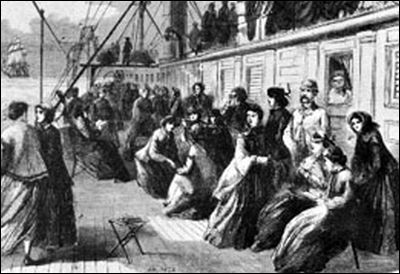The Hidden Dimension of Nineteenth-Century Immigration Law is a new article by
Kerry Abrams, University of Virginia School of Law. It appears in
Vanderbilt Law Review (October 2009). Here's the abstract:

This Article challenges the conventional wisdom that the law had little to say about immigration before 1875. Instead, it offers a reframing of immigration law history as including what scholars have previously thought of as settlement history”: The immigration of whites to the western territories. The Article focuses on a particular group of immigrants-the so-called Mercer Girls-to explore both how the failure to invoke exclusionary immigration law and the presence of other kinds of laws (including homestead acts and anti-miscegenation statutes) functioned to shape the population of the nascent western territories. A close look at this type of immigration and this group of immigrants in particular facilitates a reconceptualization not only of narratives of American westward immigration, but also of the way immigration law actually works, both on its own and in tandem with other doctrinal schemes. The story of the Mercer immigrants can help us put exclusionary immigration law in context as part of a broad set of legal strategies used to produce, shape, and maintain populations. More importantly, it shows us that the study of restriction only tells part of the story of our country. To understand whether immigration policy is meeting its goals, we must look to see how the law fosters immigration as well as how the law restricts it.
